Be ‘In-Tune’ with Nature
The art of harvesting the sun
Krysia Soutar
In the Northern Hemisphere the sun is at its strongest at this time of year, so it is a good time to capture and store Solar Energy by whatever means we can.
This year our summer is unusually hot. We have been sitting out absorbing as much sunlight as possible, topping up our Vitamin D levels, before the coming colder weather. I have been thankful for my home and garden here in the West Lancashire Pennine hills. We have not suffered from too much heat and we have plenty of stored water in our water butts. And, with the recent hot weather, we have been grateful that our house has good ventilation when it is needed.
As we approach late summer, we notice that the days are shortening, which makes us think about preparing for the winter. We are concerned about the rising energy costs, and it seems crazy that all homes in this region, and elsewhere, have not yet been fitted with solar panels and retro-fitted to prevent energy loss. The Government did give some help for solar installation panels but it all stopped abruptly.
Most of our homes here are old terraced houses, with poor insulation and drafts from ill-fitting windows and doors. My own sister lives in a terrace house like this, I did a design for her home but she could not afford the work to replace windows and add a porch to the north cold side of her house. This is the same problem that many people will be facing this winter: Many of the energy efficiency measures are currently unaffordable.
By now we should be developing Solar Energy to reduce costs. Other countries such as Denmark are far ahead of us in this field. Angus and I visited a friend there in the ’90s. All the homes we saw already had really good insulation and energy saving measures, such as glass conservatories to retain heat in the winter months.
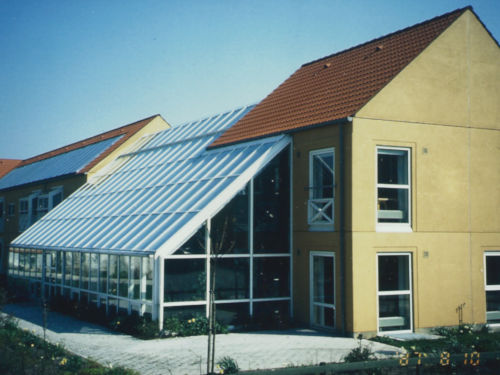 |
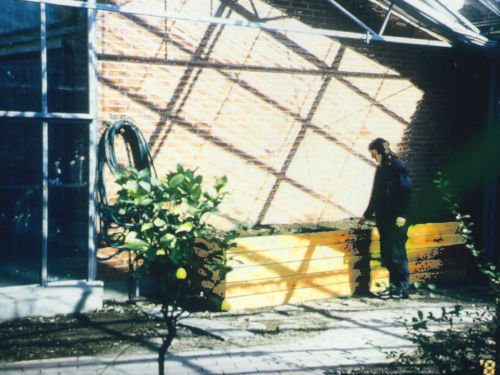 |
| Energy efficient housing in Slagelse, Denmark, 1992 | Lemons are growing in the conservatory there |
 |
 |
We can also reduce our energy costs by lowering our consumption. In our home, there are few modern appliances. We don't have a dishwasher or a tumble dryer; dishes are washed by hand and I have a big old-fashioned clothes rack which is positioned in my kitchen on the ceiling in front of the wood stove. Everyone in Lancashire used to have one of these, we call it a "Sheila Maid". I love it!
Working with the Sun
This summer I am taking a look at the the work of Jairo Restrepo , who is a famous Columbian scientist and farmer. He has a unique insight into how we have become enslaved by modern agriculture. He shows us how we can become independent by using the “Art of Harvesting the Sun”, as opposed to what he calls “kidnapping the sun’s energy”. This is a new way of working with Nature, which ties in with our permaculture ethics. I hope you will find it interesting.
The first video in English by Jairo Restrepo was filmed at Ragmans Farm. He describes a new way of working with nature, and he has also published a book "The ABC of Organic Agriculture” which is only available online from Ragmans Farm shop.
 |
Ragmans Lane Farm
I am going back in time now, to when I first visited with Angus in the early 1990’s. shortly after completing our design course. I was very eager to learn more. We met Matt Dunwell and he showed us around, I was very impressed with what they were trying to achieve. They were implementing Permaculture at the farm, it was early days and everything was new and in development. Angus went back there to study with Bill Mollison on one of his rare visits.
I have been inspired to look again at what they are doing and I am delighted to find all sorts of new ways of ‘working with nature’ being implemented, still following the ethics of permaculture. Matt says: “ Our approach is focused on increased system health by improving soil and plant fertility. We encourage life and diversity from the micro-level (microbes and minerals) up to macro-level (people) creating more sustainable farming practices.”
See Ragmans Farm for details of courses and shop.
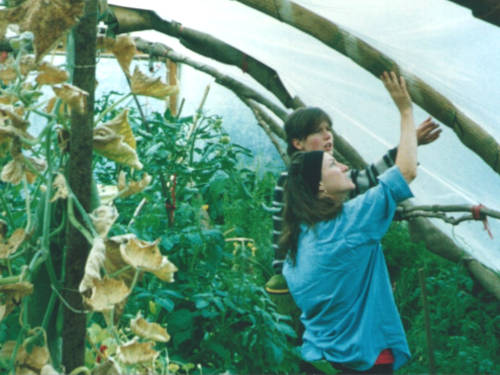 |
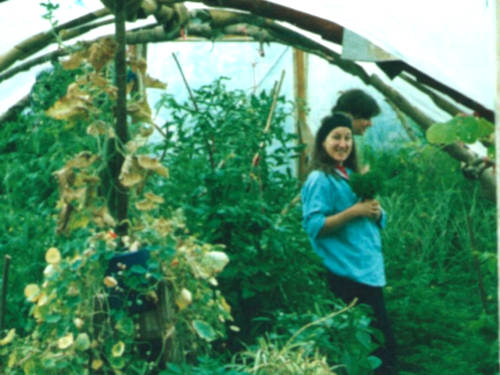 |
| Krysia in the polytunnel at Ragman's Lane (1992) | Krysia likes this polytunnel |
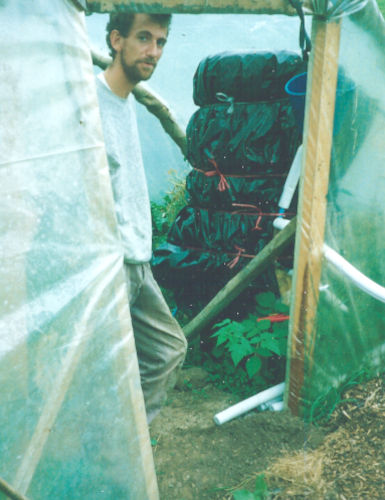 |
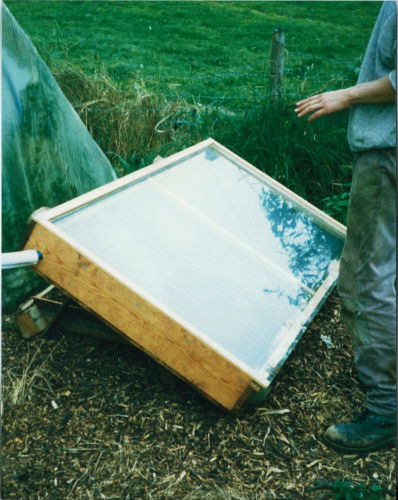 |
| Matt Dunwell shows us the polytunnel heat store (1992) | An old bookcase provides solar water heating |
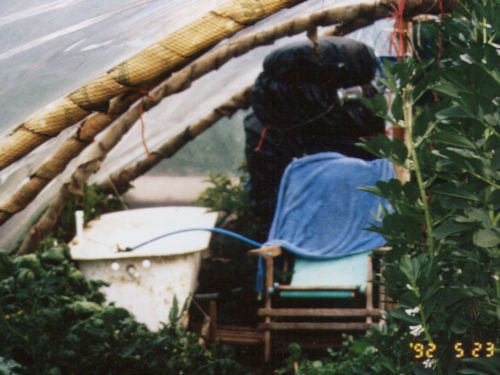 |
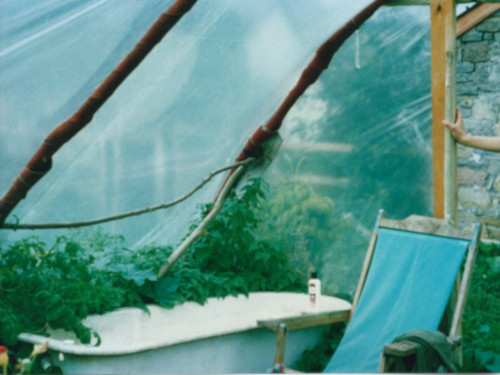 |
| Polytunnel innovations at Ragmans Lane (1992) | How many functions can you stack into a polytunnel? |
 |
 |
Recipe for Summer
Strawberry Jelly using Agar Flakes to set.
Ingredients
- 340ml Organic Apple Juice
- Fresh strawberries washed and sliced
- 1 1/2 tbsp of Clearspring Agar flakes
Agar Agar is a seaweed product from the Tegusa Plant.It is known to have a softening and cleansing effect in the body. its fibre content aids digestion. The Clearspring company state: “Our Agar Flakes are a high quality vegetarian alternative to gelatine for making deserts, jellies and aspics. They are traditionally made from sea plants in Japan. They have a neutral flavour and are free from any bleaching chemical or softening agents. Clearspring agar flakes are made using traditional slow method”.
It should be possible for us to produce our own agar from the sea-plants that grow around the British Isles which I mentioned in an earlier article.
Method
Add apple juice to pan on medium heat
- Add agar flakes and stir.
- Bring to heat and turn to low, simmer for few minutes
- until the agar flakes have dissolved.
- Wash and cut strawberries and place in dish.
- Pour the liquid over and let it cool before placing in fridge to set
- Add whatever topping you like.
Bon Appetit!
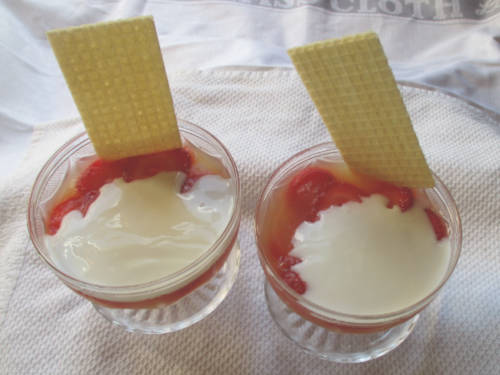 |
 |